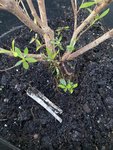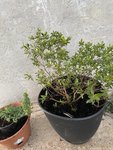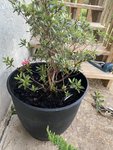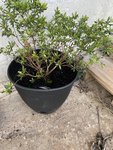MachoThumb
Seed
There’s an older gentleman near me that has a little bonsai nursery behind his house(he might even be on here!). I had been meaning to stop by and get a new plant and finally stopped by today. I picked up a little juniper and an azalea.
After spending some time on here, I realized I probably should have picked one with a better root structure. It looks like he’s done some pruning but I’d appreciate some tips on what I should do with it. I re-potted it when I got home as I plan on trimming back the roots tomorrow. Any tips would be appreciated!
After spending some time on here, I realized I probably should have picked one with a better root structure. It looks like he’s done some pruning but I’d appreciate some tips on what I should do with it. I re-potted it when I got home as I plan on trimming back the roots tomorrow. Any tips would be appreciated!




